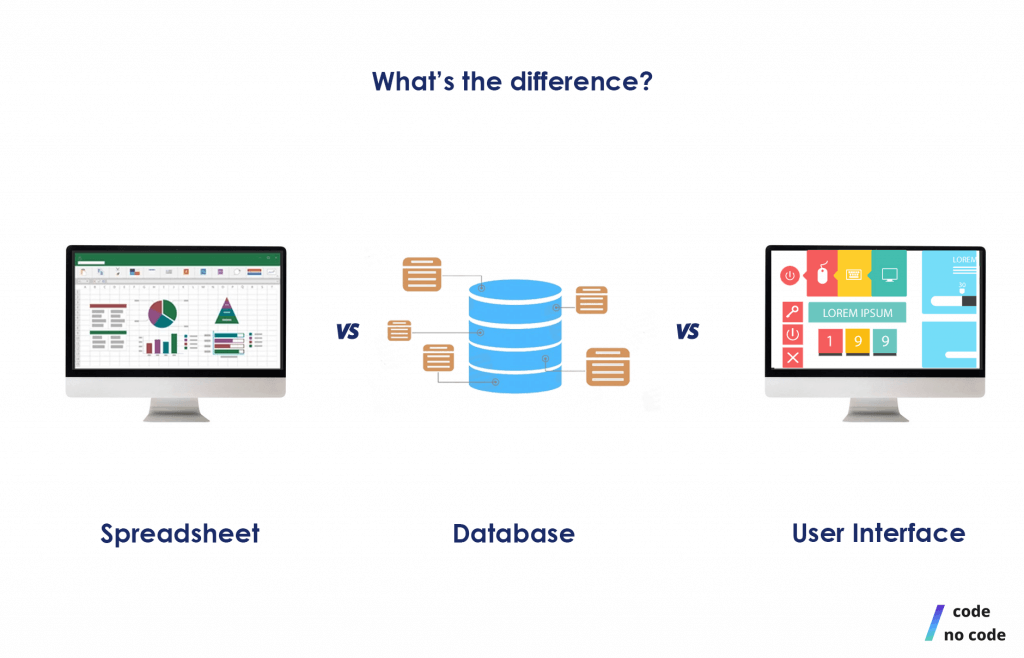Simple And Easy Open System Database Production Utilizing No-Code Technology
Simple And Easy Open System Database Production Utilizing No-Code Technology
Blog Article
Exploring the Benefits of Scalable Databases That Call For No Coding Skills for Reliable Data Management Solutions
The appearance of scalable databases that get rid of the requirement for coding skills offers a transformative chance for companies seeking efficient information administration services. By making it possible for non-technical users to harness the power of data with intuitive user interfaces, these systems enhance accessibility and foster collaboration throughout diverse teams. Moreover, their cost-effectiveness and flexibility to progressing company demands can significantly enhance operational procedures. As we consider the implications of such improvements, it becomes crucial to examine just how they can reshape the landscape of data monitoring and drive sustainable growth in an affordable atmosphere.
Boosted Access for Individuals
Enhanced accessibility for customers is an important element of scalable databases, making certain that data administration systems are straightforward and instinctive. In a period where data-driven decisions are extremely important, access permits a broader series of individuals, consisting of those without extensive technical proficiency, to engage with data source systems effectively. This democratization of information accessibility facilitates enhanced collaboration throughout departments, encouraging staff members to remove understandings and make educated decisions.
User-friendly interfaces, such as aesthetic information and drag-and-drop features depiction, simplify intricate information communications. These enhancements reduce the discovering curve connected with traditional database monitoring, allowing individuals to concentrate on leveraging information as opposed to facing technological complexities. Moreover, scalable data sources frequently integrate real-time analytics and personalized dashboards, giving users with immediate understandings tailored to their certain needs.

Cost-Effectiveness and Source Financial Savings
Efficient information monitoring not only rests on accessibility but likewise on cost-effectiveness and resource savings. Scalable databases made for individuals without any coding abilities substantially minimize economic problems generally connected with typical database management systems. By eliminating the demand for specialized programming experience, companies can assign their resources more effectively, focusing funds on core company tasks as opposed to substantial training or working with skilled personnel.
Furthermore, these data sources often make use of cloud-based services, which additionally minimize prices associated with equipment and upkeep. Organizations can scale their data source solutions according to their requirements, preventing the expenses sustained from over-provisioning sources. This versatility implies businesses can adjust to transforming needs without sustaining unneeded costs, leading to significant long-lasting cost savings.
Additionally, easy to use interfaces enhance data access and monitoring processes, decreasing the time invested in administrative jobs. This effectiveness translates right into labor price savings, enabling groups to concentrate on strategic campaigns as opposed to regular maintenance. In general, adopting scalable data sources that need no coding skills promotes a more cost-effective strategy to data monitoring, allowing organizations to maximize their resources while keeping high levels of functional effectiveness.
Improved Cooperation Across Teams

Moreover, scalable data sources promote smooth interaction amongst group participants. With straightforward user interfaces that require no coding skills, staff members can easily produce, change, and share reports or dashboards customized to their details needs. This democratization of data empowers non-technical users to contribute understandings, improving the collective environment.
Additionally, these databases sustain concurrent accessibility, enabling numerous customers to work with the exact same dataset at the same time. This feature enhances efficiency, as groups can take part in joint information evaluation without the risk of variation control concerns. The ability to leave notes or comments directly within the data source better promotes dialogue and clears up data analyses.
Streamlined Data Monitoring Processes
In today's data-driven atmosphere, companies identify the requirement of structured data monitoring processes to maximize efficiency and precision. By leveraging scalable data sources that require no coding abilities, companies can simplify their information handling and lower the intricacies usually related to standard data source systems. This access encourages non-technical individuals to engage straight with data, promoting quicker decision-making and reducing dependence on specialized IT employees.
Structured information monitoring processes enhance operations by he said automating regular tasks such as data entry, recognition, and coverage. Automated data combination ensures that details from different sources is aggregated flawlessly, removing silos and fostering a linked view of crucial company metrics (no-code). In addition, easy to use interfaces allow employees to adjust information conveniently, allowing them to generate insights that drive tactical efforts without the demand for substantial training.
This effectiveness not just speeds up functional processes however also reduces the potential for human error, ensuring that data remains trusted and precise. Ultimately, streamlined data management processes via scalable data sources result in improved efficiency, permitting companies to concentrate on core activities while making certain that their data administration practices are effective and efficient.
Scalability for Growing Companies

For expanding ventures, the capacity to scale up or down is critical. A scalable database can take care of an influx of data produced from new clients, items, or solutions, making sure that business operations stay continuous. These databases offer the ability to manage peak loads effectively, which is important during durations of quick development or seasonal spikes.
Additionally, lots of scalable database solutions are developed with straightforward user interfaces that call for no coding abilities, empowering non-technical staff to handle data successfully (no-code). This democratization of information management permits companies to allocate resources strategically and minimize reliance on specialized IT personnel
Inevitably, adopting a scalable database not only boosts operational efficiency yet likewise fosters an atmosphere where companies can evolve and introduce without the constraints of typical database systems. This adaptability placements companies for lasting success in today's affordable landscape.
Final Thought
In conclusion, scalable databases that call for no coding abilities offer substantial advantages for effective data monitoring. These systems boost access for non-technical users, reduce operational prices, and advertise partnership across wikipedia reference teams. By enhancing data monitoring procedures and providing scalability for growing organizations, such services allow companies to adjust to changing needs properly. Eventually, the fostering of these straightforward data sources cultivates technology and placements organizations for long-lasting success in a dynamic setting.
Enhanced accessibility for customers is an important aspect of scalable data sources, ensuring that data management systems are easy try these out to use and intuitive.User-friendly interfaces, such as visual information and drag-and-drop attributes representation, streamline complex information communications. Overall, adopting scalable data sources that need no coding skills promotes a much more cost-effective approach to information administration, making it possible for organizations to maximize their resources while maintaining high levels of functional performance.
By leveraging scalable data sources that call for no coding abilities, services can simplify their data handling and minimize the complexities generally connected with typical database systems - no-code.Streamlined information monitoring procedures enhance operations by automating routine tasks such as data access, validation, and reporting
Report this page